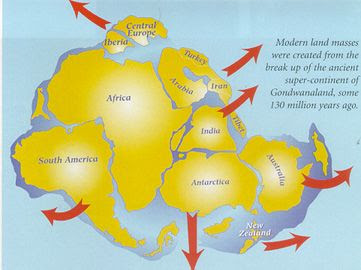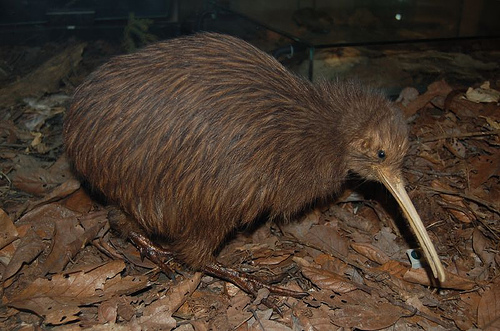Whale watching inspired me and I have started planning my coffee table book on New Zealand “wildlife”. I may submit this stunning photo montage to National Geographic as I consider a career change.
When one thinks about NZ, what does one think about first?


 But you can see them in the wild as well
But you can see them in the wild as well
 Or cleaning up in the vinyards
Or cleaning up in the vinyards
 And if you are coming down a mountain trail
And if you are coming down a mountain trail
 The reason wildlife is in quotes is that, aside from birds, NZ has (or had) essentially no wildlife. A common misconception is that NZ goes way back to Gondwanaland and that what is here is left over from the time of the dinosaurs.
The reason wildlife is in quotes is that, aside from birds, NZ has (or had) essentially no wildlife. A common misconception is that NZ goes way back to Gondwanaland and that what is here is left over from the time of the dinosaurs.
 But really, at its most submerged (23 million years ago), New Zealand was only a few tiny islands upon which the future flora and fauna were clinging to life. So wildlife developed in a very narrow and restricted environment.
But really, at its most submerged (23 million years ago), New Zealand was only a few tiny islands upon which the future flora and fauna were clinging to life. So wildlife developed in a very narrow and restricted environment.
New Zealand is known for its birds, of which there are two varieties: those that fly and those that do not. There are no indigenous land mammals (i.e. predators) on these islands, so why fly when you can walk?
The most famous of the New Zealand birds is the Kiwi, a nocturnal flightless bird that looks like this
 Well, they really look like this (courtesy of google images)
Well, they really look like this (courtesy of google images)
 (Incidentally, New Zealanders have not always been nicknamed Kiwis. It really began in the late 19th Century when overseas NZ soldiers were referred to as Kiwis. This gradually became extended to the population at large).
(Incidentally, New Zealanders have not always been nicknamed Kiwis. It really began in the late 19th Century when overseas NZ soldiers were referred to as Kiwis. This gradually became extended to the population at large).
We took a few bird pictures of our own this year, some of which are rather goofy looking

 This one, with the evil eye tried, to attack me
This one, with the evil eye tried, to attack me
 Some like to hang out on cars (where they like to eat the windshield wipers and other rubber items). These birds live in the mountains.
Some like to hang out on cars (where they like to eat the windshield wipers and other rubber items). These birds live in the mountains.
 Many of our photos are of seabirds
Many of our photos are of seabirds




 Some are best seen early in the morning (Marlborough Sound)
Some are best seen early in the morning (Marlborough Sound)

 Some are introduced species that will sneak up on you unexpectedly (yes, this is wild)
Some are introduced species that will sneak up on you unexpectedly (yes, this is wild)
 And finally, my favorite bird photo of the year
And finally, my favorite bird photo of the year
 There were some other birds prior to the arrival of Pakeha (white) settlers, including the giant Moa. Their fate is well-described in the picture below.
There were some other birds prior to the arrival of Pakeha (white) settlers, including the giant Moa. Their fate is well-described in the picture below.
 Moa largely sustained the first human settlers (Maori) in their first 200 years on the islands, from around 1250 AD. These birds (like the great wooly mammoth, the saber-toothed tiger, and the Neanderthal) were extinct by 1400 AD, forcing Moari towards the more agrarian existence (supplemented with ‘roast enemy’ on special occasions) noted by the Europeans in the late 1700s and early 1800s.
Moa largely sustained the first human settlers (Maori) in their first 200 years on the islands, from around 1250 AD. These birds (like the great wooly mammoth, the saber-toothed tiger, and the Neanderthal) were extinct by 1400 AD, forcing Moari towards the more agrarian existence (supplemented with ‘roast enemy’ on special occasions) noted by the Europeans in the late 1700s and early 1800s.
